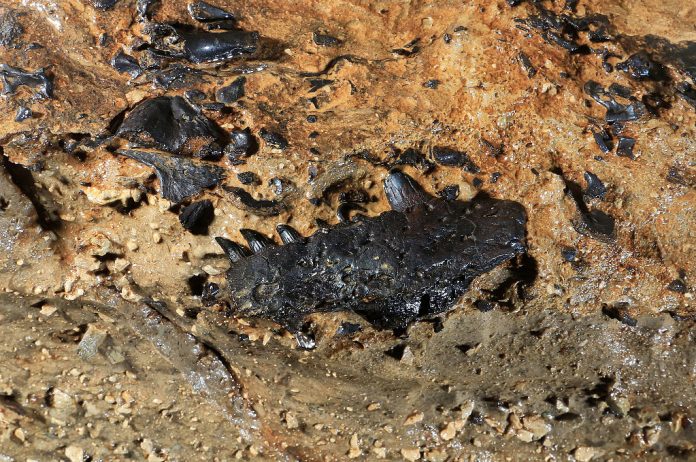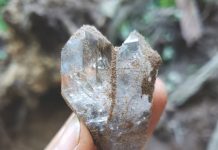
By Jim Brace-Thompson
One big step in the history of life on Earth involved the transition from water to land by four-limbed vertebrate critters, or tetrapods. It was a transition that ultimately led to none other than we humans. And this so-called “fish-tetrapod transition” was no mean feat.
This grand transition meant inventing ways to extract oxygen from the atmosphere in the lungs rather than from water via gills, coming up with ways to keep from drying up, and evolving limbs for walking. It also meant laying eggs in ways by which they might not dry up on land and issuing babies from the womb outside the comfort of a watery environment to which vertebrates had grown accustomed.
Now, three new genetics studies lend support for how this grand transition happened. In an article in a recent issue of the journal Science, evolutionary biologist Borja Esteve-Altava says, “Everything necessary was already there.”
Fossilized remains allow us to see the transition and morphological shift over the eons, as shown in bones and carbonized smears on rocks. A new report in the journal Cell looks at genes in living fish that allow us to peer far back into time via current biology and genetic analysis. So-called “Hox11” proteins regulate molecules that lead to the creation of forelimbs, and scientists have found that although fish normally suppress such proteins, certain mutations may override that suppression — and did so in times past.
Also, lobe-finned fish that are alive today (lungfish and coelacanths) and ray-finned fish have recently been analyzed at the genomic level. The purpose of the studies is to determine when such critters diverged from one another and when lungfish and coelacanths led in the direction of land animals 425 million years ago. From what researchers have deduced, many of the current fish examined “all have much of the genetic equipment needed for life on land.” This state includes genes that might build lungs to take in oxygen from the air and limbs necessary for terrestrial locomotion.
Thus, forget fossil bones and smears on shale. Genomic analysis of living fish has much to inform us about the long development of vertebrates that eventually left a watery environment to set foot on land. Life today informs us of life in days long ago.
Author: Jim Brace-Thompson
 Jim began and oversees the AFMS Badge Program for kids, has been inducted into the National Rockhound & Lapidary Hall of Fame within their Education Category, and is the president-elect for the American Federation of Mineralogical Societies.
Jim began and oversees the AFMS Badge Program for kids, has been inducted into the National Rockhound & Lapidary Hall of Fame within their Education Category, and is the president-elect for the American Federation of Mineralogical Societies.
Contact him at jbraceth@roadrunner.com.
If you enjoyed what you’ve read here we invite you to consider signing up for the FREE Rock & Gem weekly newsletter. Learn more>>>
In addition, we invite you to consider subscribing to Rock & Gem magazine. The cost for a one-year U.S. subscription (12 issues) is $29.95. Learn more >>>
















